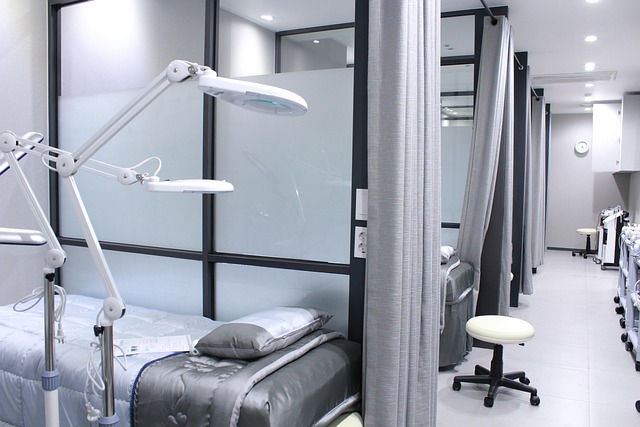Skincare professionals recommend tailoring eyebrow waxing methods to skin types. Oily and dry skin benefit from different products, while sensitive skin requires gentler techniques like thread or sugar waxing. Hot waxes are suitable for oilier skin, whereas cold waxes are preferred for sensitivity. Skilled technicians use specialized waxes for sensitive areas, emphasizing proper hygiene and aftercare for a positive experience.
“Uncover the secret to achieving smooth, flawless skin with our comprehensive guide on choosing the perfect waxing method tailored to your unique complexion. From understanding your skin type—whether oily, dry, or combination—to exploring techniques like hot vs. cold eyebrow waxing, we’ve got you covered. We delve into face and body waxing considerations, ensuring every inch of your skin is treated with care. Master the art of waxing with our expert tips and choose the right approach for a radiant, bump-free finish.”
Understanding Your Skin Type: Oily, Dry, or Combination?
Understanding your skin type is a crucial first step in choosing the right waxing method for your eyebrows. Skin can generally be categorized as oily, dry, or combination. If you have oily skin, you may notice that your forehead and nose are typically shiny, and pores appear larger. In this case, eyebrow waxing could help balance out your complexion by reducing hair that contributes to an overly greasy look.
For those with dry skin, the area might feel tight and flaky, especially after cleansing. Here, eyebrow waxing can be a gentle yet effective way to remove unwanted hairs without further drying out the skin. Consider using a wax formulated for sensitive skin or incorporating moisturizing ingredients to combat dryness post-waxing. If you have combination skin, meaning parts of your face are oily while others are dry, look for products and techniques that cater to both needs, such as waxes with hydrating properties tailored for specific areas.
Eyebrow Waxing Techniques: Hot vs. Cold for Different Complexions
When it comes to eyebrow waxing, the choice between hot and cold waxes depends greatly on your skin type. For those with sensitive skin, cold waxes are often the better option. They tend to be gentler on the skin as they don’t require a high melting point, reducing the risk of irritation or redness. Hot waxes, on the other hand, can cause discomfort for delicate complexions and may even lead to skin burns if not applied correctly.
Conversely, individuals with thicker or oilier skin often find success with hot waxes. The higher temperature helps to thin out the wax, making it easier to apply and remove hair effectively. Hot waxes also tend to grip the hair more tightly, ensuring a cleaner and longer-lasting result. However, it’s crucial to use a high-quality hot wax formulated for sensitive areas to avoid damaging the skin.
Face Waxing: Choosing the Right Approach for Smoothness
Face waxing is an essential step in achieving smooth, radiant skin, but the right approach varies greatly depending on your skin type. For instance, those with sensitive skin should opt for softer, more gentle waxing methods to avoid irritation. Strip waxing might be suitable for some, while others may find it too harsh, favoring thread or sugar waxing instead. These alternative methods are less aggressive and can be more soothing for delicate facial skin.
When considering eyebrow waxing, it’s crucial to balance smoothness with shape. Coarse hair removal techniques like strip waxing can swiftly reshape eyebrows but might cause redness or discomfort. Fine-sized waxes or threading offer a gentler approach, ensuring precise, long-lasting results without the potential side effects. The key is to choose a method that aligns with your skin’s needs and tolerance for minimal pain and maximum comfort.
Body Waxing Considerations: Legs, Arms, and Sensitive Areas
When considering body waxing, different areas require tailored approaches due to varying skin textures and sensitivity levels. For instance, leg and arm hair removal is a common practice, with many people opting for smooth, maintenance-free skin. Waxing is an effective method for these areas as it removes hair from the root, leading to longer-lasting results. However, it’s crucial to use a suitable wax type, like sugar or strip wax, designed for larger surface areas to ensure comfort and minimize irritation.
Sensitive areas, such as the bikini line and underarms, demand extra care. Eyebrow waxing, for instance, should be approached with caution in these regions due to the delicate skin. Specialized waxes formulated for sensitive skin, along with skilled technicians, can make the process less uncomfortable. Additionally, maintaining proper hygiene and aftercare routines is essential to prevent infections and ensure a positive waxing experience.
When it comes to achieving smooth, waxed skin, selecting the perfect method for your unique complexion is key. From understanding your skin type – whether oily, dry, or combination – to choosing between hot and cold waxing techniques for eyebrows, each approach offers tailored benefits. For face waxing, different methods ensure optimal results, while body waxing considerations for legs, arms, and sensitive areas require special attention. By embracing personalized care, you can navigate the world of waxing with confidence, achieving the flawless, smooth skin you desire.
